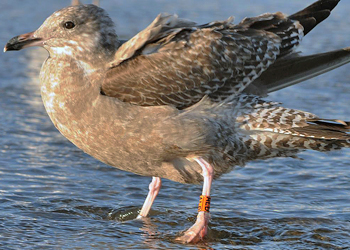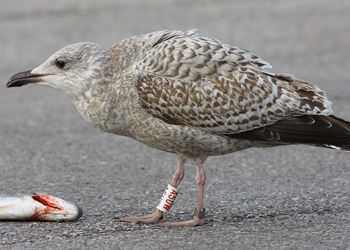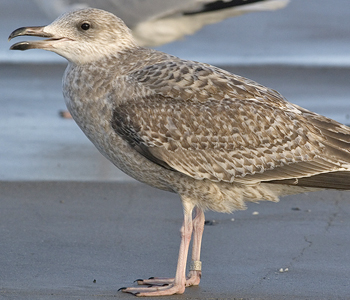 Lesser Black-backed Gull (graellsii & intermedius)
Lesser Black-backed Gull (graellsii & intermedius)
(last update: November 04, 2015
lbbg 1cy May
lbbg 1cy June
lbbg 1cy July
lbbg 1cy August
lbbg 1cy September
lbbg 1cy October
lbbg 1cy November
lbbg 1cy December
lbbg 2cy January
lbbg 2cy February
lbbg 2cy Mar-April
lbbg 2cy May
lbbg 2cy June
lbbg 2cy July
lbbg 2cy August
lbbg 2cy September
lbbg 2cy October
lbbg 2cy November
lbbg 2cy December
lbbg 3cy January
lbbg 3cy February
lbbg 3cy March
lbbg 3cy April
lbbg 3cy May
lbbg 3cy June
lbbg 3cy July
lbbg 3cy August
lbbg 3cy September
lbbg 3cy October
lbbg 3cy November
lbbg 3cy December
lbbg sub-ad Jan
lbbg sub-ad Febr
lbbg sub-ad March
lbbg sub-ad April
lbbg sub-ad May
lbbg sub-ad June
lbbg sub-ad July
lbbg sub-ad Aug
lbbg sub-ad Sept
lbbg sub-ad Oct
lbbg sub-ad Nov
lbbg sub-ad Dec
lbbg adult January
lbbg adult February
lbbg adult March
lbbg adult April
lbbg adult May
lbbg adult June
lbbg adult July
lbbg adult August
lbbg adult September
lbbg adult October
lbbg adult November
lbbg adult December
first calendar year: December
By November, many LBBG have left the colonies and surrounding feeding grounds near the Maasvlakte (the Netherlands) and have migrated south towards France, Portugal, Morocco and Senegal. By mid-November, several 100's LBBG may still stay near the Maasvlakte, probably as long as it's not freezing. By December, a couple of hundreds remain on continental NW Europe, as north as southern Netherlands along the coast at Westkapelle, 65 km south of the Maasvlakte (see map). As it seems, every year a larger group of LBBG stay "at the most northern latitude as possible", i.e. migrate south only when winter conditions or food supply force them to. They feed out on the North Sea and follow coasters and fishing trawlers in mixed flocks of mainly Herring Gull (argentatus and argenteus) and (in winter only a few) Yellow-legged (michahellis) and Caspian Gulls (cachinnans).
Year 2000 had a rather mild winter with temperatures below zero as late as mid-December. At Westkapelle, ringed individuals from Scandinavia, Denmark, the Netherlands, Belgium and Britain were present. When winter really started in December, this group moved south as well, to unknown wintering grounds, probably the Atlantic coast of Western and SW Europe.
The first weeks of November 2001 proved to be mild again and several 100's of LBBG (many adults) could be found at southern locations in the Netherlands: the Maasvlakte and Westkapelle. As in the previous year, red colour-ringed juveniles from the Maasvlakte (the Netherlands), a green colour-ringed 2cy LBBG from Helgoland (Germany) and blue colour-ringed juveniles from Vest-Agder (southern tip of Norway) were present, together with several metal-ringed juveniles from Belgium, Britain, Norway, Denmark, Sweden and the Netherlands. Westkapelle seems to be one of the best places to watch graellsii and intermedius LBBG together from a short distance.
Comparison of 1CY November taxa:
1cy Lesser Black-backed Gull: post-juvenile moult
The partial autumn moult (moult into so-called "first winter" plumage) includes the body and head feathers. This moult starts as soon as the nest is abandoned (especially in southern populations of graellsii) and continues until January. Early graellsii juveniles fledge by late-June in France, Belgium and the Netherlands, intermedius and fuscus fledge only by mid-July in northern Norway.
The post-juvenile moult in the first year is extensive in southern Lesser Black-backed Gull populations and the final stage of this moult is more or less reached by mid November. Northern juvenile intermedius and nominate fuscus postponed the post-juvenile moult until they reach the wintering grounds, hence retain a juvenile plumage in their hatch year.
Although graellsii is well ahead of its cousins fuscus and intermedius on January 01, much changes dramatically in the new year. Intermedius start a late post-juvenile moult, replacing feathers in March-April. Not only the scapulars and inner wing-coverts are replaced, many birds start replacing almost all of the visible wing-coverts and also rectrices. Advanced birds even include secondaries in this late post-juvenile moult and return in fresh 2nd gen plumage in N Europe in June (2nd gen, except for the juvenile primaries).
Fuscus too has a late post-juvenile moult, or shifted first complete moult. Here things are more complicated: some birds follow a moult strategy similar to that of the complete moult in taxa like argentatus, michahellis, cachinnans or graellsii do in their summer. Other 2CY fuscus adopt a strategy outlined above for intermedius, and start replacing primaries after they have moulted the wing-coverts and tail.
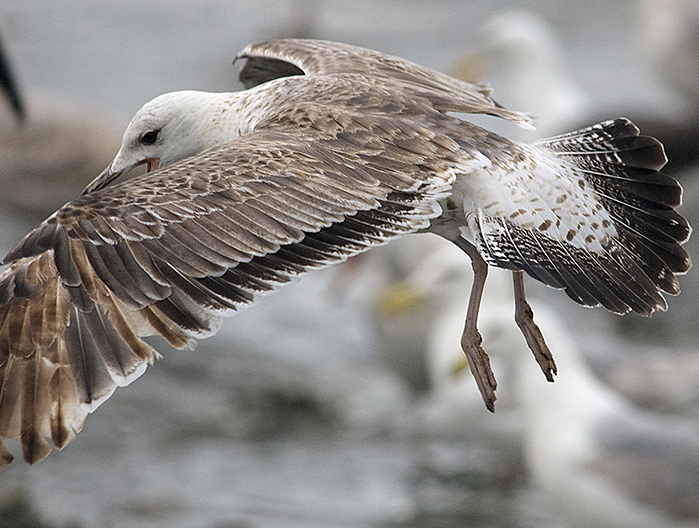
June 15 2013 (picture Maarten van Kleinwee). Some intermedius-type birds replace secondaries in winter quarters. Such birds return in spring with fresh-looking coverts, tail and secondaries, but by mid-June, they normally show retarded primary moult (about two weeks later in moult than classic graellsii). Here, PMS is only 11.
After the post-juvenile moult, the head turns paler on throat and forehead. The breast turns paler as well, but most is an effect of bleaching and wear. The feathers on belly and vent remain juvenile in most 1cy graellsii by November.
U.K. 1cy: graellsii
 Lesser Black-backed Gull graellsii RK.RH 1CY, December 09 2016, Matosinhos beach, Matosinhos, Portugal. Picture: José Marques.
Lesser Black-backed Gull graellsii RK.RH 1CY, December 09 2016, Matosinhos beach, Matosinhos, Portugal. Picture: José Marques. Lesser Black-backed Gull graellsii 0FJ1 1CY, December 12 2016, Matosinhos beach, Matosinhos, Portugal. Picture: José Marques.
Lesser Black-backed Gull graellsii 0FJ1 1CY, December 12 2016, Matosinhos beach, Matosinhos, Portugal. Picture: José Marques. Lesser Black-backed Gull graellsii 5CS5 1CY-3CY, December 2014 - July 2016, Praia de Mira, Coimbra, Portugal. Picture: José Marques.
Lesser Black-backed Gull graellsii 5CS5 1CY-3CY, December 2014 - July 2016, Praia de Mira, Coimbra, Portugal. Picture: José Marques.  Lesser Black-backed Gull graellsii 5FJ8 1CY, December 23 2016, Matosinhos beach, Matosinhos, Portugal. Picture: José Marques.
Lesser Black-backed Gull graellsii 5FJ8 1CY, December 23 2016, Matosinhos beach, Matosinhos, Portugal. Picture: José Marques. Lesser Black-backed Gull graellsii 5FK9 1CY, November - December 2016, Matosinhos beach, Matosinhos, Portugal. Picture: José Marques.
Lesser Black-backed Gull graellsii 5FK9 1CY, November - December 2016, Matosinhos beach, Matosinhos, Portugal. Picture: José Marques. Lesser Black-backed Gull graellsii F:046 1CY-4CY, December 2014 - January 2017, Matosinhos beach, Matosinhos, Portugal. Picture: José Marques.
Lesser Black-backed Gull graellsii F:046 1CY-4CY, December 2014 - January 2017, Matosinhos beach, Matosinhos, Portugal. Picture: José Marques. LBBG
1cy 1Y4:C December 01 2012, Madrid, Spain. Photo by Delfín González.
LBBG
1cy 1Y4:C December 01 2012, Madrid, Spain. Photo by Delfín González. Lesser Black-backed Gull graellsii 7C6:C 1CY, December 04-16 2015, Matosinhos, Portugal. Picture: José Marques.
Lesser Black-backed Gull graellsii 7C6:C 1CY, December 04-16 2015, Matosinhos, Portugal. Picture: José Marques.  Lesser Black-backed Gull graellsii A:D58 1CY-2CY, December 2015 & June - September 2016, Matosinhos, Portugal. Picture: José Marques.
Lesser Black-backed Gull graellsii A:D58 1CY-2CY, December 2015 & June - September 2016, Matosinhos, Portugal. Picture: José Marques. LBBG
1cy B+M December 12 2010, Madrid, Spain. Photo by Delfín González.
LBBG
1cy B+M December 12 2010, Madrid, Spain. Photo by Delfín González. Lesser Black-backed Gull graellsii BTO GR87018 1CY, December 19 2014, Matosinhos Beach, Matosinhos, Portugal. Picture: José Marques.
Lesser Black-backed Gull graellsii BTO GR87018 1CY, December 19 2014, Matosinhos Beach, Matosinhos, Portugal. Picture: José Marques.France 1cy: graellsii
 Lesser Black-backed Gull graellsii 3:DNR 1CY, December 02-07 2016, Matosinhos beach, Matosinhos, Portugal. Picture: José Marques.
Lesser Black-backed Gull graellsii 3:DNR 1CY, December 02-07 2016, Matosinhos beach, Matosinhos, Portugal. Picture: José Marques.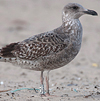 Lesser Black-backed Gull graellsii R:V7N 1CY-3CY, December 2014 - October 2016, Matosinhos beach, Matosinhos, Portugal. Picture: José Marques.
Lesser Black-backed Gull graellsii R:V7N 1CY-3CY, December 2014 - October 2016, Matosinhos beach, Matosinhos, Portugal. Picture: José Marques. Lesser Black-backed Gull graellsii R:X0R 1CY-2CY, December 2014 - January 2015, Leixões Port, Matosinhos, Portugal. Picture: José Marques.
Lesser Black-backed Gull graellsii R:X0R 1CY-2CY, December 2014 - January 2015, Leixões Port, Matosinhos, Portugal. Picture: José Marques.Belgium 1cy:
"Dutch intergrade" graellsii
 LBBG
1cy LPAT December 12 2009, Madrid, Spain. Photo by Delfín González.
LBBG
1cy LPAT December 12 2009, Madrid, Spain. Photo by Delfín González. LBBG TCAC 1cy-2cy, December 2011 - February 2012, Madrid, Spain. Picture: Delfín González.
LBBG TCAC 1cy-2cy, December 2011 - February 2012, Madrid, Spain. Picture: Delfín González. Lesser Black-backed Gull graellsii ZPA.N 1CY, December 06 2016, Matosinhos beach, Matosinhos, Portugal. Picture: José Marques.
Lesser Black-backed Gull graellsii ZPA.N 1CY, December 06 2016, Matosinhos beach, Matosinhos, Portugal. Picture: José Marques. Lesser Black-backed Gull graellsii ZSA.K 1CY, December 06 2016, Matosinhos beach, Matosinhos, Portugal. Picture: José Marques.
Lesser Black-backed Gull graellsii ZSA.K 1CY, December 06 2016, Matosinhos beach, Matosinhos, Portugal. Picture: José Marques.the Netherlands 1cy:
"Dutch intergrade" graellsii
 Lesser Black-backed Gull graellsii 22 1CY-2CY, December 2015 - January 2016 & October 2016, Matosinhos, Portugal. Picture: José Marques.
Lesser Black-backed Gull graellsii 22 1CY-2CY, December 2015 - January 2016 & October 2016, Matosinhos, Portugal. Picture: José Marques. Lesser Black-backed Gull graellsii 2G 1CY, October & December 2016, Matosinhos beach, Matosinhos, Portugal. Picture: José Marques.
Lesser Black-backed Gull graellsii 2G 1CY, October & December 2016, Matosinhos beach, Matosinhos, Portugal. Picture: José Marques. LBBG
1cy 2Y December 02 2012, Madrid, Spain. Photo by Delfín González.
LBBG
1cy 2Y December 02 2012, Madrid, Spain. Photo by Delfín González. LBBG
1cy AS December 06 2012, Madrid, Spain. Photo by Delfín González.
LBBG
1cy AS December 06 2012, Madrid, Spain. Photo by Delfín González. Lesser Black-backed Gull graellsii R3 1CY-2CY, December 2015 & April 2016, Matosinhos, Portugal. Picture: José Marques.
Lesser Black-backed Gull graellsii R3 1CY-2CY, December 2015 & April 2016, Matosinhos, Portugal. Picture: José Marques. LBBG
1cy J5 December 12 2010, Madrid, Spain. Photo by Delfín González.
LBBG
1cy J5 December 12 2010, Madrid, Spain. Photo by Delfín González. Lesser Black-backed Gull graellsii K.BWT 1CY, December 07 2016, Matosinhos beach, Matosinhos, Portugal. Picture: José Marques.
Lesser Black-backed Gull graellsii K.BWT 1CY, December 07 2016, Matosinhos beach, Matosinhos, Portugal. Picture: José Marques. LBBG
1cy E December 04 2010, Madrid, Spain. Photo by Delfín González.
LBBG
1cy E December 04 2010, Madrid, Spain. Photo by Delfín González.N Germany 1cy:
transition graellsii - intermedius
 LBBG
1cy H54A December 17 2006, Madrid, Spain. Photo by Delfín González.
LBBG
1cy H54A December 17 2006, Madrid, Spain. Photo by Delfín González. LBBG
1cy HC65 December 12 2010, Madrid, Spain. Photo by Delfín González.
LBBG
1cy HC65 December 12 2010, Madrid, Spain. Photo by Delfín González.Denmark 1cy: intermedius
 Lesser Black-backed Gull intermedius V.KF4 1CY, December 23 2016, Matosinhos beach, Matosinhos, Portugal. Picture: José Marques.
Lesser Black-backed Gull intermedius V.KF4 1CY, December 23 2016, Matosinhos beach, Matosinhos, Portugal. Picture: José Marques.Norway 1cy: intermedius
 Lesser Black-backed Gull intermedius J221N 1CY-2CY, December 2015 - April 2016 & November 2016, Matosinhos, Portugal. Picture: José Marques.
Lesser Black-backed Gull intermedius J221N 1CY-2CY, December 2015 - April 2016 & November 2016, Matosinhos, Portugal. Picture: José Marques. LBBG
1cy J6Y3 December 12 2010, Madrid, Spain. Photo by Delfín González. From C. Norway.
LBBG
1cy J6Y3 December 12 2010, Madrid, Spain. Photo by Delfín González. From C. Norway. LBBG
1cy J8NZ December 29 2006, Madrid, Spain. Photo by Delfín González.
LBBG
1cy J8NZ December 29 2006, Madrid, Spain. Photo by Delfín González. LBBG 1cy J0Y7 December 03 2003, Le Louroux-Béconnais, W France. Images Alain Fosse.
LBBG 1cy J0Y7 December 03 2003, Le Louroux-Béconnais, W France. Images Alain Fosse.



